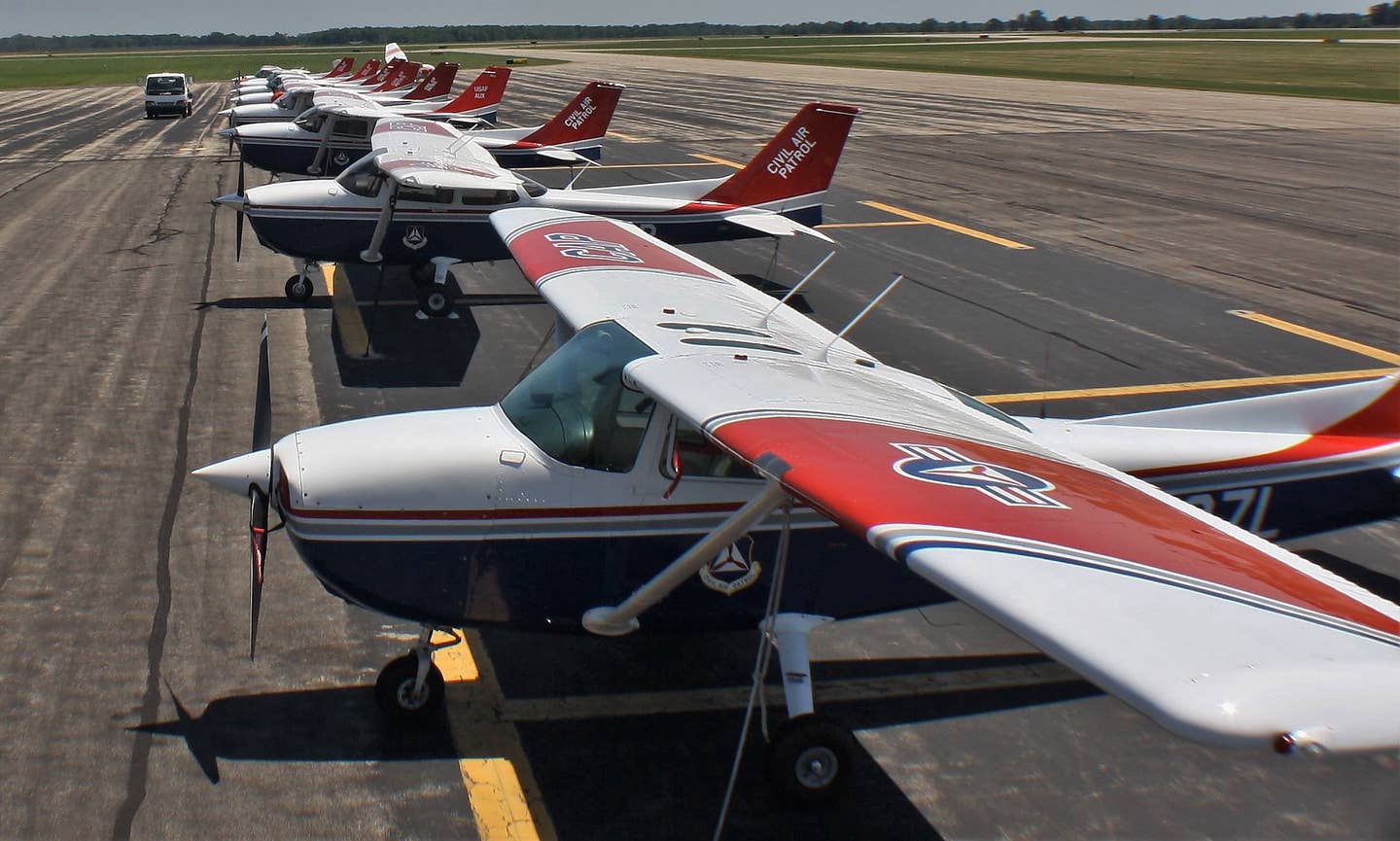
Civil Air Patrol operates the world’s largest fleet of piston aircraft including hundreds of Cessna 182s. [Courtesy: Civil Air Patrol]
For the National Guard pilots assigned to keep Washington, D.C., safe from the air, an exercise called Falcon Virgo was conducted in mid-March near El Paso, Texas, to practice the kind of critically important flying needed to prepare for a certification process that occurs regularly for Guard members who will replace those currently on assignment in the nation’s capital. In this exercise, Civil Air Patrol (CAP) pilots were tasked with simulating incursions into restricted airspace to prepare Mississippi Army National Guard members for the upcoming deployment in the nation’s capital.
There were 18 aircraft from CAP and 62 CAP members assisting with exercise Falcon Virgo. Piloting single-engine Cessna airplanes, CAP pilots acted as tracks-of-interest and entered into restricted airspace while North American Aerospace Defense Command (NORAD) aircrews responded, honing their intercept skills. The training area was a restricted U.S. Army range, which simulated the highly-restricted airspace in Washington.
“In a time when all Department of Defense units are under travel restrictions, CAP was still supporting this essential training mission as tasked by our parent organization, the US Air Force,” said Col. Joe Smith, CAP’s Southwest Region commander. “What our volunteer professionals do to help train active duty service members as part of the Total Force is invaluable.” CAP aligns under NORAD’s Continental US Region.
CAP airplanes and crews made about 18 flights per day, flying 24 hours a day from March 18 to 22 along routes designated by the exercise evaluators to meet training objectives. Falcon Virgo is a recurring exercise in support of Operation Noble Eagle, which started as the military response to the terrorist attacks of September 11, 2001, to place a greater emphasis on the surveillance and control of the airspace over Canada and the US.
The origins of CAP date to 1936, when Gill Robb Wilson envisioned mobilizing America’s civilian aviators for national defense. After the Civilian Air Reserve (CAR) was formed in 1938, it wasn’t until summer of 1941 when a proposal for a “Civil Air Patrol” made by Wilson, New York Mayor Fiorello H. LaGuardia, publisher Thomas H. Beck, and newspaperman Guy P. Gannett was approved by the Commerce, Navy, and War departments, and CAP national headquarters opened its doors on December 1 of that year.
According to the CAP, the following day after the terrorist attacks of September 11, 2001, a CAP Cessna 172 was the only nonmilitary aircraft allowed in the nation’s airspace and provided emergency management officials the first high-resolution images of the World Trade Center site. Today, with increased federal funding as part of the US Department of Homeland Security, CAP has received new technologies for its emergency services, and as an auxiliary of US Air Force, CAP operates the world’s largest fleet of piston aircraft (560), and sUAS (1,700) to perform about 90% of continental US inland search and rescue missions.
In addition to CAP’s more than 66,000 members who perform homeland security, disaster relief, joint training exercises, and drug interdiction missions, they also have an enhanced mission to develop of aerospace/STEM education, with CAP members serving as mentors to nearly 28,000 young people participating in Cadet Programs.

Sign-up for newsletters & special offers!
Get the latest FLYING stories & special offers delivered directly to your inbox






